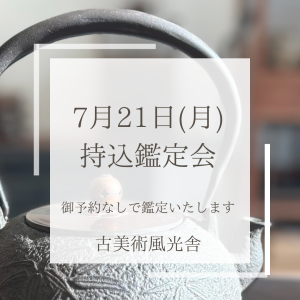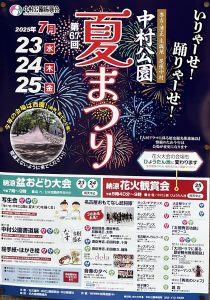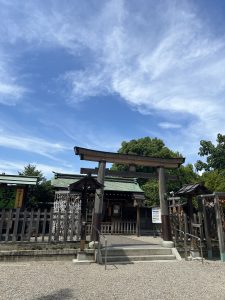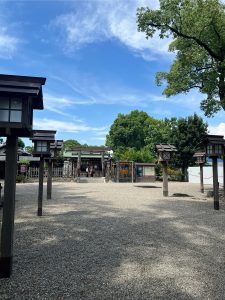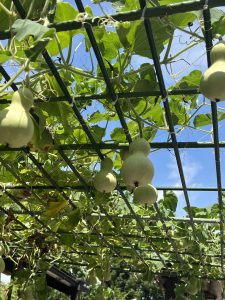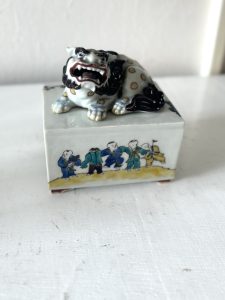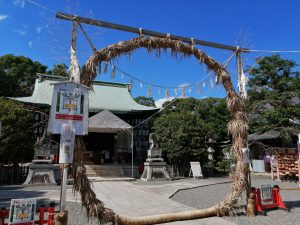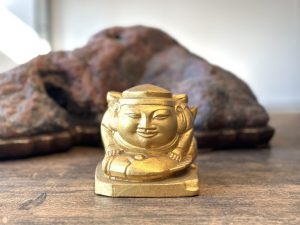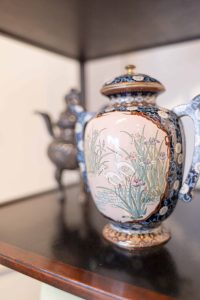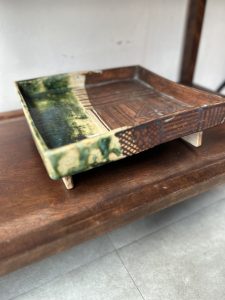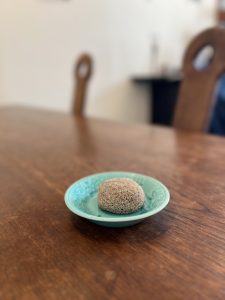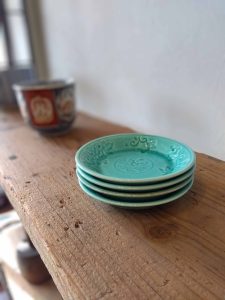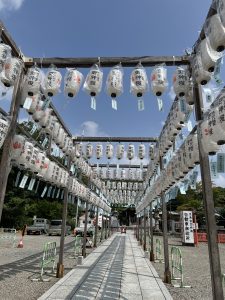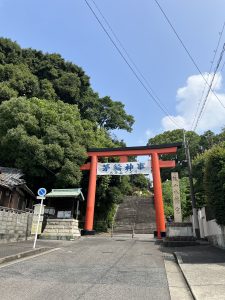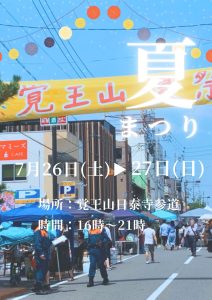平賀源内の“べらぼう”なセンス(愛知県名古屋市千種区姫池通 骨董買取 古美術風光舎)
2025.07.18
七月も半ばを過ぎると、スーパーなどの店先で「土用」という文字が目立ってきますね。鰻の特設コーナーが設けられ、土用と土曜をかけて若干ゴリ推し気味ではありますが、やはり見かけるとそのコーナーに吸い寄せられてしまいます。
「土用の丑の日に鰻を食べる」という風習は全国的によく知られていますが、そもそも「土用」とは、もともと中国の五行思想に基づく暦の概念です。五行思想とは、木・火・土・金・水の五つの要素で自然界を説明しようという考え方で、四季のそれぞれに、春は「木」、夏は「火」、秋は「金」、冬は「水」をあてはめ、それらが移り変わる合間に「土」を割り当てました。つまり、季節の境目に巡ってくるのが「土用」というわけです。
つまり一年には4回の土用があることになりますが、今日では「土用」といえば、立秋前の「夏の土用」を思い浮かべる人が多いかもしれません。
そして2025年は、7月19日から8月6日が夏の土用の期間となるのですが、「土用の丑の日」が2回あるのはご存知でしたか?
「丑の日」とは、十二支の「丑」にあたる日になります。昔は、子・丑・寅……と日にちを十二支で数えていました。ですので、18日間の土用の間に丑の日が2回巡ってくることもあるというわけです。というわけで、今年は一の丑・7月19日、二の丑・7月31日と2度の丑の日が巡ってきます。
日本の夏の風物詩として知られる「土用の丑の日」。この日は「うなぎを食べる日」として定着していますが、その由来には江戸時代の天才発明家であり蘭学者、平賀源内が考案したという説が根強いと言われていますね。
江戸時代、あるうなぎ屋が平賀源内に「夏場はうなぎが売れない」と相談したことが始まりでした。当時の人々は、夏に脂がのったうなぎを避ける傾向があり、売上が落ち込んでいたのです。
相談を受けた源内は「丑の日には『う』のつく食べ物(うなぎ、うどん、ウリ、梅干し…など)を食べるとバテない」という伝承を活かして、店先に一枚の貼り紙を書きました。
「本日、土用丑の日」
たったそれだけの言葉。
ですが江戸の人々の関心を引きつけ、“丑の日にはうなぎを食べると元気が出るらしい”そんな空気ができあがり、やがて他の店も真似をし、いつしか「夏はうなぎ」が定番になっていきました。
平賀源内。彼をひと言で説明するのは難しいですね。
本業は医者。けれど、電気を研究し、エレキテルを復元し、小説を書き、脚本を演出し、薬を売り、コピーを書き、人を集め、世の中を回していた。
今でいうなら、発明家×脚本家×マーケター×プロデューサーといったところでしょうかでしょうか。
それにしても「酷暑にうなぎのかば焼きを食べてスタミナをつける」という江戸時代のキャンペーンが、今の時代も年中行事として根付いているとは平賀源内のマーケティングセンスに驚くばかりです。
いよいよ蝉の大合唱も始まりました。連日の暑さ、湿度で皆さんヘトヘトだと思いますが、そんな時こそ、「う」のつく元気の出る食べ物をいただいて、これからの酷暑を乗り切りましょう。
ではでは、また。(スタッフT)
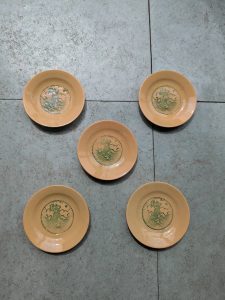
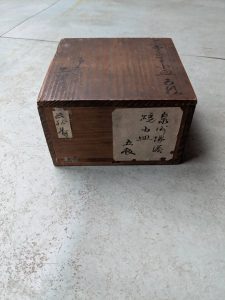
After the middle of July, the word “Doyou (Saturday)” becomes conspicuous in supermarkets and other stores. Special eel sections are set up, and although the name “Doyou” and “Saturday” are slightly exaggerated, people are still attracted to these sections when they see them.
The custom of “eating eel on the day of the Ox in Doyou” is well known throughout Japan, but originally, “Doyou” is a calendar concept based on the Chinese philosophy of the Five Elements. The five elements are wood, fire, earth, metal, and water, and each of the four seasons is represented by wood in spring, fire in summer, metal in fall, and water in winter, with earth assigned in between. In other words, “Doyou” is the season that comes around at the boundary of the seasons.
In other words, there are four “Doyo” in a year, but today, most people may think of ‘Doyo’ as the “summer Doyo” before the first fall.
In 2025, the summer Doyou period will be from July 19 to August 6, but did you know that there are two “Doyou no Ushi” days?
The “day of the Ox” is the day that falls on the “Ox” of the twelve signs of the Chinese zodiac. In the old days, the days were counted according to the twelve signs of the Chinese zodiac: the Child, Ox, Tiger, and ……. So, during the 18 days of Doyou, the day of the Ox may come around twice. Therefore, this year, the first Ox day, July 19, and the second Ox day, July 31, will be twice in the same year.
Doyou no Ushi (day of the Ox)” is a well-known summer tradition in Japan. This day has become established as “a day to eat eels,” and it is said that the origin of this day is rooted in the theory that it was invented by Gennai Hiraga, a genius inventor and Dutch scholar of the Edo period (1603-1868).
It began in the Edo period when an eel shop consulted with Hiraga Gennai, saying that eels did not sell well during the summer. At that time, people tended to avoid fatty eels in summer, and sales were declining.
Gennai, who was consulted, wrote a sign in front of his store saying, “On the day of the Ox, if you eat foods with ‘U’ in them (eels, udon, cucumbers, pickled plums, etc.), you will not be battered.
Today is the day of the Ox.
That’s all there was to it.
Eventually, other restaurants began to imitate him, and “eels in summer” became the standard.
Gennai Hiraga. It is difficult to describe Hiraga Gennai in a few words.
He was a doctor by profession. But he studied electricity, restored the elektron, wrote novels, directed screenplays, sold medicine, wrote copy, gathered people, and turned the world around.
In today’s terms, he would be an inventor, screenwriter, marketer, and producer.
Still, I am amazed at the marketing sense of Gennai Hiraga that his campaign in the Edo period to “eat grilled eel kabayaki to give you stamina in the extreme heat” has taken root as a year-round event even in this day and age.
Finally, the chorus of cicadas has begun. I am sure everyone is exhausted from the daily heat and humidity, but this is the time to eat foods with the “u” in them that will cheer you up and help you get through the coming extreme heat.
See you soon. (Staff T)
*******************
ご実家の整理やお片付けなどをされている方のご相談などが多くございます。
お片付けなどくれぐれもご無理のないようになさってくださいませ。
風光舎では古美術品や骨董品の他にも絵画や宝石、趣味のお品など様々なジャンルのものを買受しております。
お片付けをされていて、こういうものでもいいのかしらと迷われているものでも、どうぞお気軽にご相談下さいませ。
また風光舎は、出張買取も強化しております。ご近所はもちろん、愛知県内、岐阜県、三重県その他の県へも出張いたします。
まずは、お電話お待ちしております。
愛知県名古屋市千種区姫池通
骨董 買取【古美術 風光舎 名古屋店】
TEL052(734)8444
10:00-18:00 OPEN

